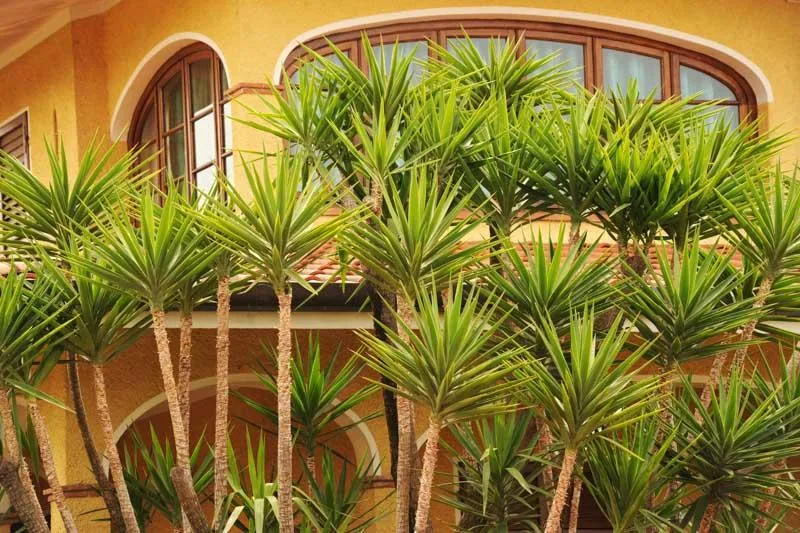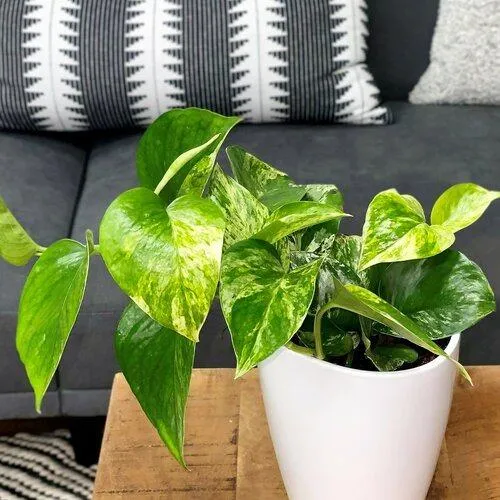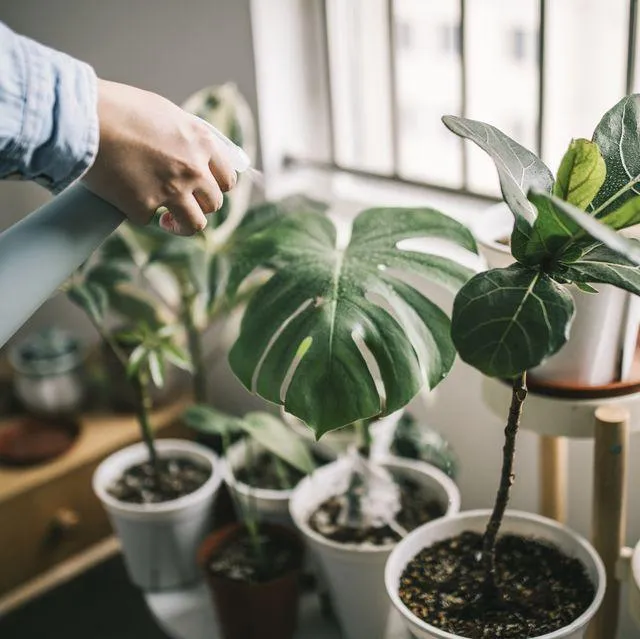A Guide to Low-Maintenance Yellow Variegated Plants
If you’re looking for colorful foliage that requires little care, yellow variegated plants should be at the top of your list. As both a gardener and someone fascinated by plant variety, I’ve found these unique beauties really light up any landscape. In this article, I’ll cover some top yellow variegated plant picks and share my experiences keeping them looking their best with minimal effort.
What are Yellow Variegated Plants?
Basically, variegated plants have leaves patterned with another color, usually white or yellow, interspersed with the plant’s normal green color. The streaks or patches of contrasting hue make for some seriously photogenic plants. Yellow variegated varieties in particular really pop in the garden and seem to sort of glow in the landscape. Kind of like these plants were born to be Instagram stars, if you know what I mean!
The variegation comes from a genetic mutation that causes some chlorophyll production to be lacking in certain leaf regions. So while green pigment lets the plant photosynthesize like normal, the white or yellow sections aren’t as productive. As a result, variegated plants tend to grow a bit slower than their green counterparts. Still, this quirk yields some super eye-catching foliage styles worth the tradeoff in size, if you ask me.
Top Low-Maintenance Yellow Variegated Plant Picks
- Hostas: Known for their lush, rounded leaves in shades of blue, green and yellow, hostas come in many variegated cultivars. These beauties thrive in part shade and stay compact. I’ve had great luck with ‘Praying Hands’, ‘Guacamole’ and ‘Sum and Substance’ needing little water once established.
- Lemon Lime Leaf Primrose: With oval leaves splashed in yellow and fragrant yellow flowers, this cutie brightens up any spot. Provide morning sun and keep soil moist. From my experience, it tolerates humidity well too.
- Society Garlic: Resembling lily of the valley, these clumping beauties produce yellow striped blossoms. I love their clean, sweet aroma. Mine flourish with average soil and little care year after year. Amazing!
Additional Great Yellow Variegated Options:
Here are some other beautiful yellow variegated plants perfect for low-effort landscapes:
- Golden creeping Jenny
- Lemon coral sedum
- Yellowhearted fichus
- Golden variegated mondo grass
- Lilyturf
- Golden variegated Baltic ivy
Tips for Care
Luckily, the minimal maintenance yellow variegated plants need is kind of right up my alley since I’m lazy like that sometimes. But here are a few pro tips I’ve picked up over the years to keep your yellow beauties at their brightest:

- Give them the sun exposure they prefer – Most like part shade, so evaluate your yard’s sunlight levels. Too much sun can scorch leaves.
- Water deeply, then allow soil to dry – Consistent moisture keeps foliage crisp without promoting rot. I water mine once a week or less usually.
- Fertilize in spring to boost new growth – I use a balanced, all-purpose plant food mixed per label instructions. Seems to do the trick!
- Divide clumps every few years for vigor – In early spring or fall, rebury outer stalks to fill in bare spots.
- Deadhead spent blooms for ongoing flowers – This extends beauty and prevents unwanted seedlings.
Personalizing With Yellow Variegated Combinations
Now that we’ve covered top plant picks and care essentials, let’s talk designing with these stunners! Yellow variegated foliage pulls landscapes together amazingly well when paired with certain contrasting tones.
One of my favorite color schemes uses yellow variegated hostas or coral bells nestled amongst blue salvia, lamb’s ears and delicate grey-blue ornamental grasses. It makes for a dreamy, soft palette that somehow seem to sort of blend together while complementing each other at the same time. Talk about nice!
Another winning combo mixes golden variegated liriope with deep purple coneflowers and burgundy coleus. The dramatic hot hues really make those lush yellow leaves pop. It’s totally my jam for a fun, memorable border.
Finally, yellow variegated ivy, society garlic, and lemon coral sedum provide invaluable texture paired with white/cream flowers like yarrow, phlox and lamb’s ears. The minimal tones evoke a breezy, carefree vibe totally perfect for those lazy summer afternoons if you ask me.
Bringing It All Together
Whether you prefer cottage gardens bursting with color or relaxed oases minimizing maintenance, yellow variegated plants deserve a spot in your landscape design. Their unique color patterning adds such eye-catching dimension compared to all-green varieties. Basically, they light up gardens while requiring very little fuss on your part.

With some sun-loving selections, a few that thrive semi-shaded, and extremely hardy groundcovers, there’s surely a yellow variegated plant perfect for wherever you call home. Hopefully this guide inspires you to give these beauties a try! Looking forward to seeing all the photos of your new yellow variegated buddies on Instagram.
Let me know if you have any other questions. Sincerely hope this overview answers what you were hopefully trying to basically find or whatever when searching on yellow variegated plants. Until next time, happy gardening!
Common Indoor Yellow Variegated Plants
| Plant | Description | Care Needs | Size |
|---|---|---|---|
| Dieffenbachia | Tropical plant with yellow-speckled leaves known to purify indoor air. Non-toxic to pets. | Water when top inch of soil is dry. Medium indirect light. | Up to 4 feet tall, 2 feet wide. |
| Golden Pothos | Vining plant that thrives in low or indirect light. Tolerates neglect but grows quickly with moisture and nutrients. | Water when top inch of soil is dry. Low light. | Up to 8 feet long vines. |
| Peperomia | Succulent-like foliage in yellow and green. Beneficial insect habitat. Tolerates low light and dry conditions. | Water sparingly, allow soil to dry between waterings. Low light. | 4-12 inches tall and wide. |
| Calathea | Tropical prayer plant with marbled yellow and green leaves that fold up at night. Adds humidity to indoor spaces. | Mist leaves daily and water weekly. Medium indirect light. | 8-24 inches tall and wide. |
| Maranta | Prayer plant with three-colored leaves in yellow, green, bronz. Thrives in humid environments like bathrooms. | Mist leaves daily and water weekly. Medium indirect light. | 4-12 inches tall and wide. |
FAQ
-
What creates the yellow spots on variegated plants?
Variegated plants get their yellow spots from a genetic mutation. This mutation causes sections of the leaves to not produce chlorophyll, which is the green pigment in plants.
-
Do all parts of a variegated plant stay yellow?
Not always. New growth may come in completely green or revert back to a solid green color. Typically, the older or more mature leaves keep their variegation.
-
Are variegated plants harder to care for than solid colored ones?
Usually variegated plants need a bit more sun than plain green types to stop the yellow parts from fading. Other than that, their needs are similar to regular plants. It’s not much harder to look after them.

-
Why do some people prefer variegated plants?
Variegation offers a kind of uniqueness. It provides some pizzaz with contrasting colors. Variegated plants can look really awesome as a centerpiece or conversation starter. They add a bit of visual interest compared to an all green plant.
-
Do yellow spots impact a plant’s growth?
For the most part, variegation doesn’t slow a plant’s growth. However, the yellow parts don’t photosynthesize, so extremely variegated plants may struggle a bit. Proper care mitigates any potential impact on growth.
-
Can variegation appear on any type of plant?
While many plants can have variegated varieties developed, it doesn’t happen randomly. Certain plant families are more likely to sport mutations leading to variegation. Some experts say variegation arises most often in begonias, sansevierias and peperomias.
-
Is a plant’s variegation permanent?
Not totally. Variegation can be unstable and revert to solid color in subsequent generations. However, many variegated cultivars can maintain their pattern when propagated from cuttings or other asexual reproduction methods.
So in summary, variegation comes from genetic quirks but doesn’t radically change a plant’s routine care. It exists on certain plant types and brings a cool aesthetic, even if not fully consistent generation to generation. Though variegated beauties require a smidge more sun, their charm is well worth the small extra effort.

